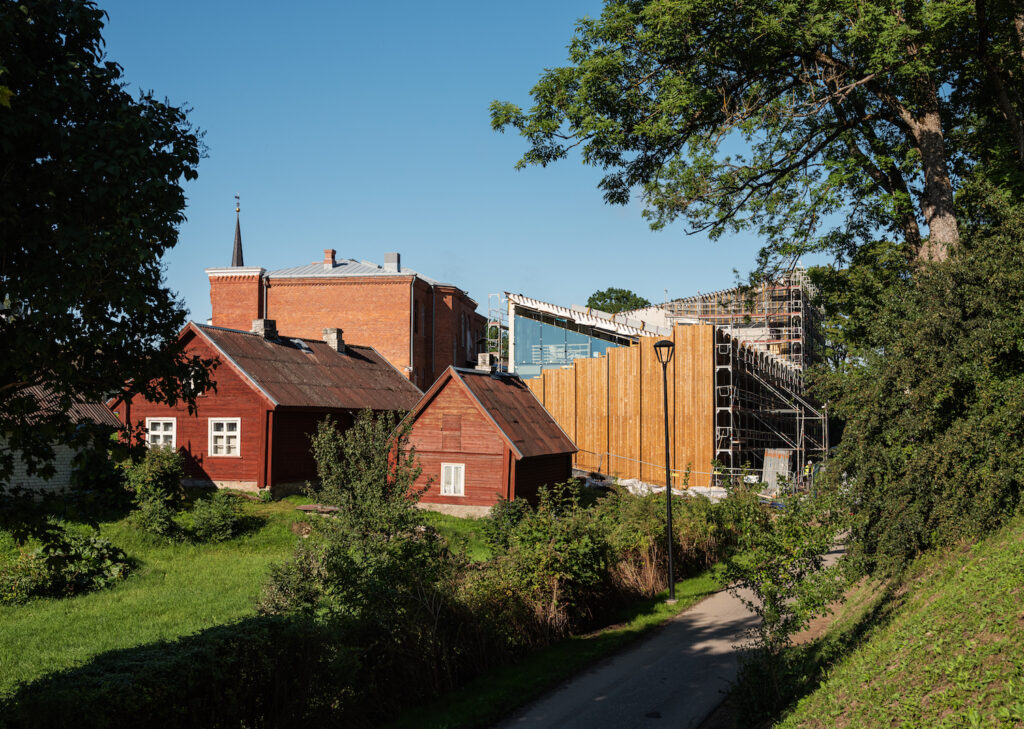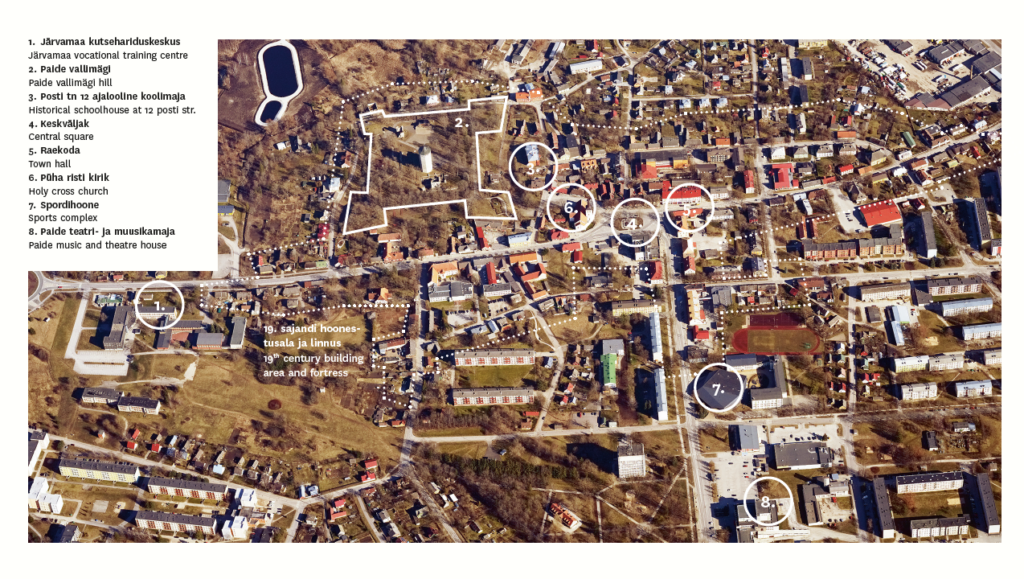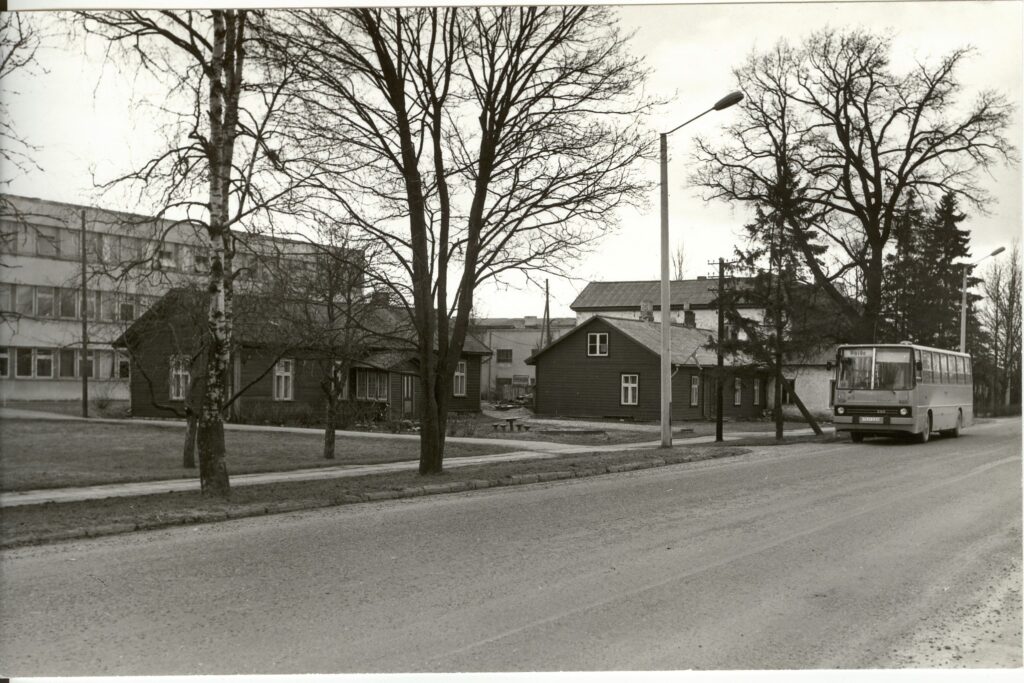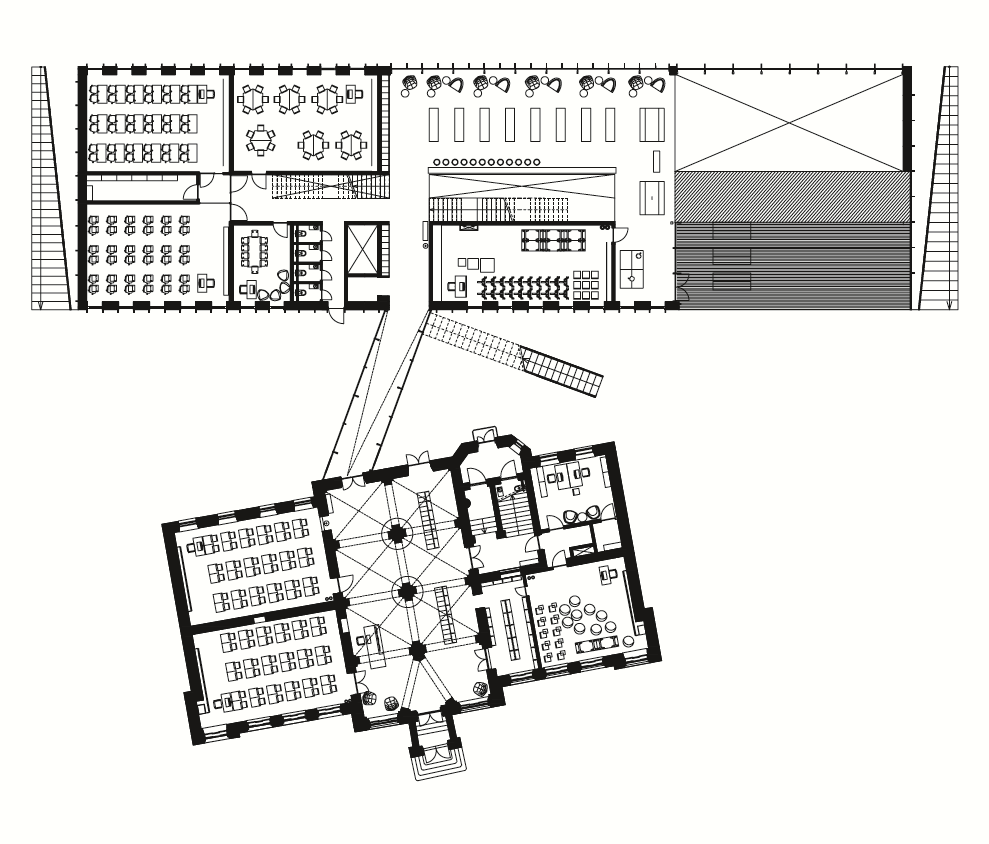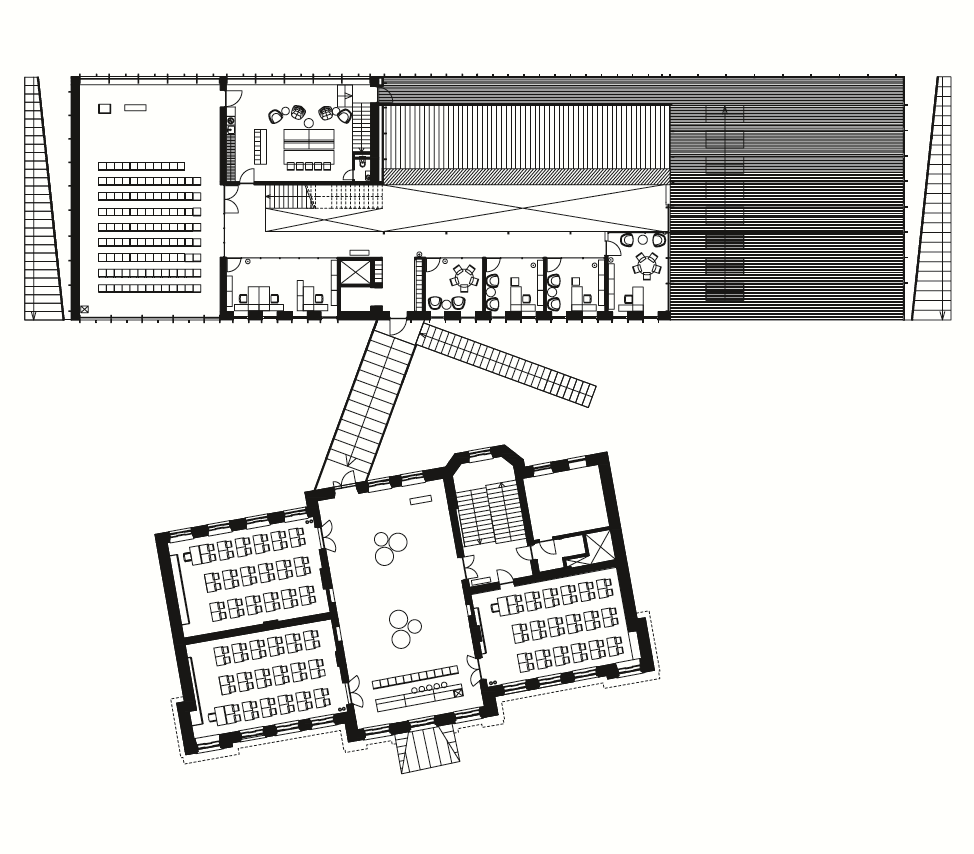A sense of mission is what drives the centenary Estonian Association of Architects to act as a replacement agent for the institution of the state architect that is currently missing in the Estonian architectural arena. Andro Mänd, Chairman of the Association, writes about what it takes to organise cross-disciplinary collaboration, an integral part of spatial design, based on the example of site selection for Paide State High School.
On October 8th this year, the Estonian Association of Architects (EAA) will celebrate its 100th anniversary, securing its place as the oldest architects’ association in the Baltic States. What was once a so-called gentlemen’s club is today a body that stands for the specialty and role of architects in Estonian society, as well as effective collaboration with other disciplines. Additionally, and perforce, the EAA has become an advocate and keeper of public interest, high quality space and living environment.
It is unfortunate that in the past thirty years, our state, unlike other states in western Europe, has not yet advanced enough to establish an institution to coordinate the integrity and quality of spatial development in the country. By sense of mission, the EAA fills this gap in Estonia. In general, the work that the association’s office, board, representative council, and various work groups perform daily towards ensuring a better living environment for us all remains invisible for the broader public. On the occasion of the centenary of the association, I shall lift the curtain and present some of the work the association does to protect public interest. Since the centenary coincides with the opening of the new Paide State High School, I shall structure my presentation around the background of the design and construction of the building, using the story to exemplify the work and contribution of the association to direct the processes that create our living environment. The framework of the process, untangled, is as follows:

9.2014 – haridus- ja teadusministeeriumis valmis Kesk-Eesti hariduselu ümberkorralduse plaan. Kavas oli liita Põltsamaa ametikool Järvamaa kutsehariduskeskusega ja kolida nad Säreverre ning asutada riigigümnaasium Paides vabanevasse kutsehariduskeskuse majja. See otsus oli ministeeriumile kõige lihtsam ning odavam, kuna kutsekooli hoone kuulub ministeeriumile. Samas ei toetanud otsus kuidagi Paide kui kiiresti kahaneva linna jätkusuutlikku arengut. Paide linn soovis uue riigigümnaasiumi asukohaks kesklinnas Vallimäe jalamil asuvat muinsuskaitsealust koolihoonet Posti tänaval.
2015 – with Jürgen Ligi taking office as state Minister of Education and Research, the Town of Paide was forced to choose a location for the state high school in the vocational training centre, or there would be no state high school at all.
2017 – change of political representatives, and negotiations between the Ministry and the local government, yielded an agreement that the state high school would start operating in both buildings. Preparations were initiated to set conditions for an open architectural competition for the extension of the vocational school building.
2018/11/15 – a rather unprecedented decision was reached at the representative council session of the Estonian Association of Architects where the council rejected the coordination of the conditions for the architectural competition for Paide State High School. The decision was unconventional as the association has always acted as proponent of public competitions. The decisive factor was the paragraph in the competition requirements which stated that the school would be divided between two separate buildings: partially, it would operate in an old schoolhouse built in 1910, located in the historical heart of Paide, and partially, in a typical soviet-era vocational schoolhouse situated by the roundabout surrounding the town. The decision came in a context of an annually shrinking urban population, numerous buildings in the historical urban centre being half-empty, and businesses and cafes in the town centre lingering in survival mode. In larger towns, a 700-metre distance between two buildings is deemed insignificant, but in a small town like Paide it is a considerable portion of the town’s diameter. Furthermore, the main volume of the new school would have been placed in the building of the vocational training centre.
2018/11/16 – the EAA contacted the Mayor of Paide Priit Värk, the Deputy Mayor Siret Pihelgas, and the town architect Marje-Ly Rebas, and set up an appointment for 2018/11/20.
2018/11/19 – the EEA was approached by representatives of the Ministry of Education and Research as well as State Real Estate Ltd., asking to cancel the meeting and set up a new one where they could participate as well.
2018/11/29 – a meeting at Paide took place that hosted representatives of the Ministry of Education and Research, State Real Estate, and the school, in addition to reps from the EAA and the town. During the meeting, the building of the vocational training centre that had recently been upgraded according to euro-standards, as well as the house on Posti Street, were visited. The visits reconfirmed the EAA’s position that the spatial solution of soviet-era ‘shelf-type’ school buildings does not meet the requirements for modern concepts of educational spaces.
Additionally, the location of the building did not support the developmental aspirations for the core of the town. Representatives of Paide as well as the school were in favour of the EAA’s viewpoint. However, the involved parties proceeded with caution, following the motto, ‘a bird in the hand is worth two in the bush’. Paide had already lost a state high school once, and the approaching elections incited concern that potential governance by the Reform party would likely result in yet another lost opportunity to accommodate a high school, due to the small number of pupils which would have made it the smallest state high school in the country.
The message from the state communicated that there was no alternative to the double-building solution because there was insufficient space for the necessary extension to the building on Posti Street. Archaeological excavations had revealed a 16th century lime kiln, which, according to the state representatives, was the reason that prohibited construction work on half of the plot, thus not enabling to fit the necessary extension on the premises.
The EAA proposed considering other alternatives situated in the town centre. One proposal was to use the extensive parking lot next to the Paide Music and Theatre House. In terms of urban planning, the site would have been ideal for the school. It would have been positioned adjacent to the sports hall of Paide, the theatre building, and in close proximity to the town’s swimming pool and the sports stadium of the middle school. All these facilities would have produced a highly functional symbiotic structure. However, the town council was not prepared to give up the parking lot. Considering the hysteria surrounding decreasing parking spots for the new central square of Paide, we must recognise the foresight of the governing officials of the town and acknowledge that our society is not yet ready to accept changes to the living environment which western Europe follows.
Another proposition was to acquire the lot (8 Posti Street) next to the historical school building or its northern part. At the end of the meeting, the town representatives promised to look into the willingness of the owner of the lot to sell it.
2018/11/29 – meeting with Minister of Education and Research Mailis Reps. The Minister favoured founding the school in one building and in the town centre, but only on condition that the town manages to procure the neighbouring plot.
2018/12/08 – Järva Teataja published an interview with Mailis Reps titled, translated: ‘Mailis Reps: Paide State High School is in an unfair state,’ where the Minister expressed support for establishing the school in the town centre.
2018/12 – the EAA met with MP-s and ministers elected from Järvamaa County. The idea of founding the new school in the town centre was backed at all of the meetings. The only visible problem area that everyone shared, including the municipal government, was the concern that after the elections, Paide might lose the state high school altogether. That was why the architectural competition definitely needed to be announced before the beginning of the elections.
2018/12 – owner of the property neighbouring the historical school building announced that he would not agree to sell his plot.
2018/12 – the EAA contacted the National Heritage Board to clarify the restrictions that accompanied the old lime kiln on the plot on Posti Street. It turned out that the National Heritage Board had not required conservation of the old kiln, but rather its documentation and marking. In other words, the state’s argument about the new extension not having enough space to fit on the plot on 12 Posti Street disappeared.
2018/12/17 – the EAA compiled a sample project for the school’s extension, showing that the entire extension could indeed fit on the plot at Posti 12. The sample project came with propositions to make minor changes to the current zoning plan to improve the functionality of the school building.
2018/12/20 – the National Heritage Board discussed some changes to be made to the zoning plan.
2018/12/20 – a town council session was held at Paide where Mayor Priit Värk announced that following the sample plan drawn up by the EAA, purchasing the adjacent Posti 8 plot was no longer necessary.
2019/01 – a decision was reached to found Paide State High School in the historical school building with the extension located on the same plot. Preparations were initiated to change the competitions requirements.
2019/03/03 – Parliament elections. Mailis Reps continued as Minister of Education and Research.
2019/03/08 – an open architectural competition was announced to establish a new study building on the historical Posti Street.
2019/07/08 – competition entry titled ‘Pai’, authored by Maarja Kask, Ralf Lõoke and Martin McLean from the Salto architecture office, was announced winner of the open architectural competition.
2021/11 – the new Paide State High School at Posti 12 will be opened.
The process illustrates lack of vision in public investments. Every ministry office is concerned with their own comfort level and how to achieve Excel-compliant cost-efficiency. That may seem a reasonable short-term solution, but as a society we are simultaneously complaining how rural areas and small towns are being flushed of their populations and how all life is moving to Tallinn. The state and the EAA are support mechanisms used to enliven historical city and town centres through various initiatives: the Good Public Space programme, or the collaboration project between the Estonian National Heritage Board and the Norwegian Directorate for Cultural Heritage (Riksantikvaren), called ‘Historic Town Centres Revitalised Through Heritage-Led Local Development’. The state uses one hand to revitalise urban centres and often the other to cut off life supply to many of them. It is unfortunate that the state seems like a tattered quilt where each local government, ministry, and office is busy with their own patch, and no one is managing the whole.
The above recollection allows to draw the conclusion that the hard work was worth it, because Paide has received a most original and unique school building, which is a significant push towards re-enlivening the historical town centre. The storyline illustrates the socially beneficial nature of the work the EAA is involved with that requires a great deal of time and commitment from the leaders of the association. It is work that remains mostly hidden to the broader public, much like the body of an iceberg. It is work without which it would be impossible to create good, forward-looking, and contemporary public space. Our task is to create space which fosters the advancement, not vanishing, of daily life in the areas of concern. Is that easy to accomplish—no. Is it necessary—yes.

ANDRO MÄND is Chairman of the Estonian Association of Architects since 2020; 2018–2020 he was Vice-chairman of the EAA.
Header photo: Tõnu Tunnel
Article is published in 2021 autumn edition Spatial Revolutions (106)

